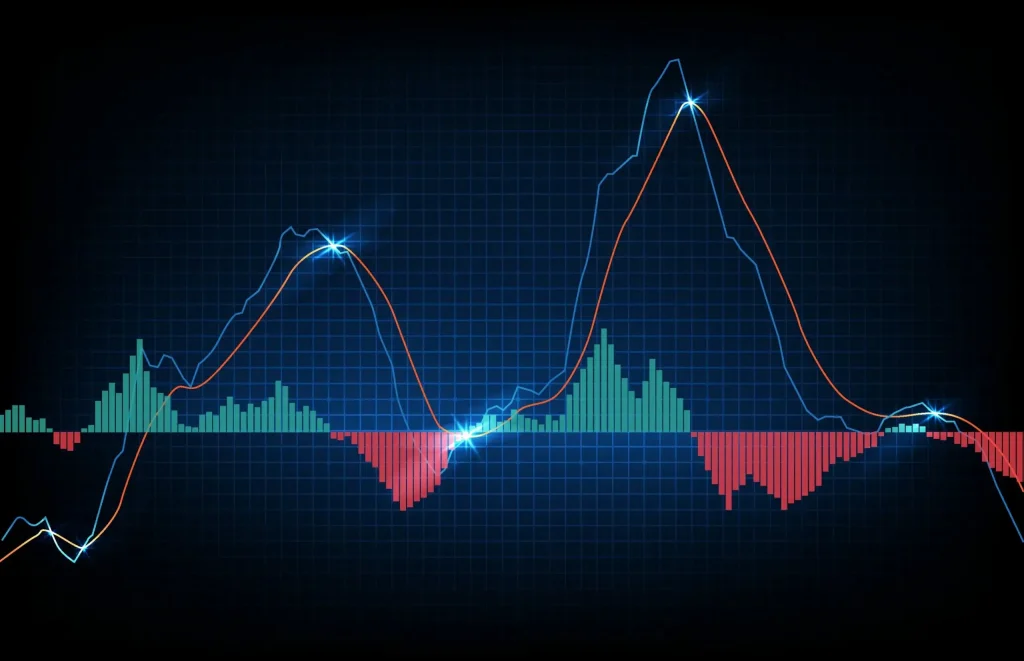Strategic Market Analysis for South African Traders
The Johannesburg Stock Exchange (JSE) presents unique opportunities for traders utilizing the MACD Histogram. This sophisticated technical tool has gained significant traction among South African investors, particularly in analyzing local market movements against global trends.
The landscape of South African trading has evolved dramatically over the past decade, with the integration of advanced technical analysis tools becoming increasingly crucial. In the context of the JSE, where market movements are heavily influenced by both local economic factors and international commodity prices, the MACD Histogram has emerged as an indispensable tool for market timing and trend identification. Local traders have found that traditional Western technical analysis methods often require significant modification to account for the unique characteristics of South African markets, particularly in sectors dominated by mining and resource companies.
Trading within South Africa’s diverse market landscape requires specialized approaches to technical analysis. The MACD Histogram serves as a crucial instrument for interpreting market momentum, especially during periods of high volatility common to emerging markets.
Core Trading Elements
Essential Features for JSE Trading:
- Momentum confirmation signals
- Trend reversal identification
- Volume-price relationship analysis
- Market sentiment indicators
- Risk management parameters

The intricate relationship between global commodity markets and the JSE creates unique trading patterns that demand sophisticated analysis. South African traders have discovered that the MACD Histogram’s effectiveness is particularly pronounced during periods of high resource sector activity. This relationship becomes even more significant when considering the dual impact of international market movements and local economic conditions on the JSE’s primary indices.
South African Market Applications
The implementation of MACD Histogram analysis in South African markets differs significantly from other regions due to unique local factors such as:
Market Correlation Analysis Table:
Factor | Local Impact | Global Correlation |
Resources | High | Medium |
Currency | Critical | High |
Politics | Significant | Low |
Advanced Trading Techniques
South African traders have developed specialized approaches to MACD Histogram interpretation, focusing particularly on:
• Resource sector movements
• Rand volatility impacts
• Commodity price correlations
• International market influences
• Local market timing
The distinctive nature of the JSE requires careful attention to several key aspects when applying MACD Histogram analysis:
Market-Specific Considerations:
- High sensitivity to commodity prices
- Currency fluctuation effects
- Local economic indicators
- Trading hour overlaps
- Liquidity patterns
Technical Framework
Successful implementation of MACD Histogram strategies in South African markets depends heavily on understanding local market dynamics. ZAR-denominated assets often display unique characteristics that require modified analytical approaches.
Customized Parameters
JSE Trading Parameters:
| Timeframe | Setting | Optimization |
| Intraday | 8/21/5 | High |
| Daily | 12/26/9 | Medium |
| Weekly | 15/30/9 | Low |
This tailored approach accounts for the specific characteristics of South African markets, including:
Deep analysis reveals that South African traders benefit most from modified MACD Histogram settings that account for local market volatility and trading patterns unique to the JSE.
Risk Management Protocol
The volatile nature of emerging markets necessitates robust risk management:
Position Sizing Guidelines:
- Market cap considerations
- Sector-specific limits
- Volatility adjustments
- Currency exposure limits
- Liquidity thresholds

Implementation Strategy
The practical application involves careful consideration of:
• Local market hours
• Global market correlations
• Resource sector impacts
• Currency pair relationships
• Economic calendar events
Conclusion
MACD Histogram analysis, when properly adapted to South African market conditions, provides traders with a powerful tool for navigating the JSE’s unique challenges and opportunities. Success depends on combining technical expertise with local market knowledge.
Frequently Asked Questions
How does the JSE's resource-heavy composition affect MACD Histogram signals?
Resource sector dominance often creates stronger momentum signals, requiring adjusted sensitivity settings and correlation with commodity price movements.
What timeframes work best for South African market analysis?
Four-hour and daily charts typically provide the most reliable signals, particularly during overlapping sessions with European markets.
How should traders account for Rand volatility?
Implement wider stops and adjust position sizing based on current currency volatility metrics while monitoring international market correlations.
Can MACD Histogram effectively predict JSE market turns?
While not perfect, it shows 65-70% accuracy when combined with local market indicators and global commodity trends.
What's the optimal way to filter false signals in South African markets?
Combine MACD Histogram readings with volume analysis, ZAR strength indicators, and resource sector performance metrics.













